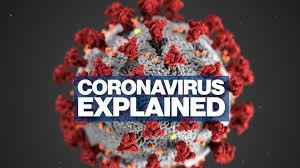Intro: This series is meant to provide timely science-based information on issues of concern for this community. These articles are not meant to shape political and social views or offer medical advice, but to inform and help community members make informed decisions.
Our current strategy is to use a combination of social distancing, PPE, and isolation. Public health authorities also recommend vaccination against influenza, a well-tolerated and safe vaccine. People who are vaccinated against influenza would be able to avoid a situation called “the double whammy” in which a person susceptible to COVID-19 would also be made ill from influenza as well. Therefore, influenza vaccination will reduce the spread of illness by removing a risk factor from the population. Although there are two vaccines in the final stages of evaluation by the FDA, there are more than 20 vaccines that are close to regulatory approval. The FDA and NIAID/NIH do not see this as a race.
All vaccines, even in emergencies, require an advisory board review by the FDA before licensure. A cold chain system needs to be developed to ensure that vaccines that are frozen (-20 or -80°C), cold liquid (2-8 °C), or freeze-dried (lyophilized) are protected during processing and transport in a way that they do not experience temperature spikes that would inactivate the vaccines. Most pharmacies can store vaccines at -20°C, but only larger medical facilities have -80°C Freezers that are expensive to maintain or depend on a supply of Liquid Nitrogen. This is why storage conditions and “cold chain” are so important.
Once a vaccine is licensed, it can be labeled and marketed and shipped to pharmacies, medical facilities, and healthcare providers. In a non-emergency situation, a review of clinical data can take 1-2 years after clinical trials are completed. That’s because health authorities like the FDA need to ensure the benefits outweigh the risks based on lab, animal, and human subject data. Risks can involve allergic reactions, systemic illnesses, and other adverse events.
Public Health authorities use a ring strategy during an outbreak for vaccination. They vaccinate the index patient and those immediately affected by the patient. In a Pandemic, healthcare workers and first responders would likely get the vaccine first. Since our supply chain and cold chain need to be re-established, distribution would likely occur in large metropolitan facilities first based on patient contact. Distribution may begin within 2-3 months after licensure and establishment of the cold chain.
Outlying facilities and areas not on immediate threat may take longer due to distribution network issues and travel affected by weather conditions. Our first responders and healthcare workers can be vaccinated within 2 months to protect them from patient/facility borne illness. Vaccine supplies for the general public will take longer since the manufacturing process for biotech products is more complicated than it is for drugs. Meanwhile, all vaccinated persons will require continuous monitoring for several years. This is needed to ensure proper reporting of serious adverse events and reactions so that future formulations can be made more effective with fewer side effects.
Public health officials recommend vaccination against influenza, use of PPE, and sheltering-in-place for this Winter.
About the writer:
Richard Tharin, MS, RAC, is a scientist with The Cerneos Group, LLC. He provides scientific and regulatory advice to biotech, diagnostic, and drug companies who develop innovative products to treat, diagnose, and mitigate exposure to infectious disease agents. He has more than 20 years in industry and government service and has direct experience with the FDA and NIH on vaccine and diagnostic development. He has published articles on biodefense and infectious disease management.

